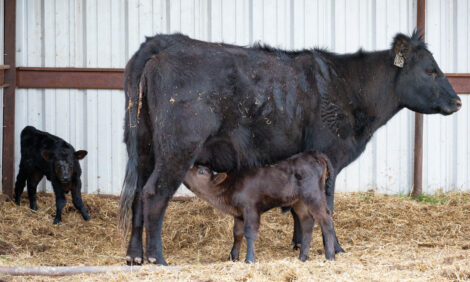



Adding Value to Cull Cows
Through simple management alone you can increase cull cow values by 20-40 per cent by knowing the markets and closely observing your breeding stock.Every fall the cull cow prices bottom out because there is a glut of cull cows on the market. But this is not typically a good time to sell a cow as it is at its worst physical shape from rearing a calf all summer, says, Gant Mourer, Oklahoma State University Beef Value Enhancement Specialist.
Adding Value to Cull Cows
Often times, marketing and increasing value of cull cows are overlooked by producers. Mainly due to the fact that the cow is open or aborted and that feed is limiting and it is not cost effective to keep a non-efficient part of the ranch around with increasing feed prices and decreasing forage availability.
However, cull cows can represent up to 10-20 per cent of the total revenue for cow/calf producers and producers can increase value of a cull cow by 25-40 per cent by management strategies alone. A producer can increase cull cow value by adding weight, improving quality and marketing cattle during seasonal price increases (Peel and Doye, 2008).
Adding weight to a cull cow not only increases total available pounds for resale, but also increases body condition. The market structure is broken-up so buyers can estimate fat cover and muscling at the auction.
Categories are breakers, boners, lean and light type cull cows. A producer can increase value of a cow by moving her up in the slaughter categories by increasing dressing percentage especially if she is relatively heavy muscled, while at the same time they have increased total saleable pounds.
Traditionally, cull cow prices are affected seasonally, like all cattle prices. In the fall any spring calving cows that are open and have weaned a calf are the first to go. Cull cows flood the market so a decrease is seen starting in July and August and continues on until November or later. So this gives a producer a window to aim for during late spring and early summer to capture value on cows culled from the herd.
In the fall, when cow prices are traditionally at their lowest, spring cows are just weaning calves. The calf has increased the nutritional needs of that cow by over 20 per cent when she is in lactation. So not only have we sold a cow in the fall when prices are low but also marketed her when she may be in a lesser desired body condition due to poor late season grass. If a producer can retain the cow after weaning to add weight and condition he can also add value.
A fall calving cow herd can match up much easier with these parameters. A producer can wean a calf in the spring put weight and condition on a cow with forage that is high in quality and hopefully readily available and still market that cow in the summer hitting our window of opportunity. This opportunity to add value also exists with a spring cow that lost a calf during pregnancy or calving and is not reproductively efficient for the cow herd and salvage value for the cow can be obtained fairly rapidly.
A spread sheet is available at http://agecon.okstate.edu/faculty/publications/3078.xls (Peel D.S. and D. Doye. 2008. Cull cow grazing and marketing opportunities. Oklahoma Cooperative Extension Service Fact Sheet. AGEC 613.) for producers to consider their own situation. The fact is that producers may find that it is most cost effective to market cull cows immediately in times when forage availability is limited and feed prices are high, as in drought.
The bottom line is this: Producers need to identify cull cows ASAP. This may mean the use of early pregnancy detection or the use of a record keeping system that indicates a cow that is not efficient and needs to be removed from the herd even if she is pregnant. Once these animals are identified, then management decisions can be tailored to add value that meets a specific producer's needs.
July 2013



